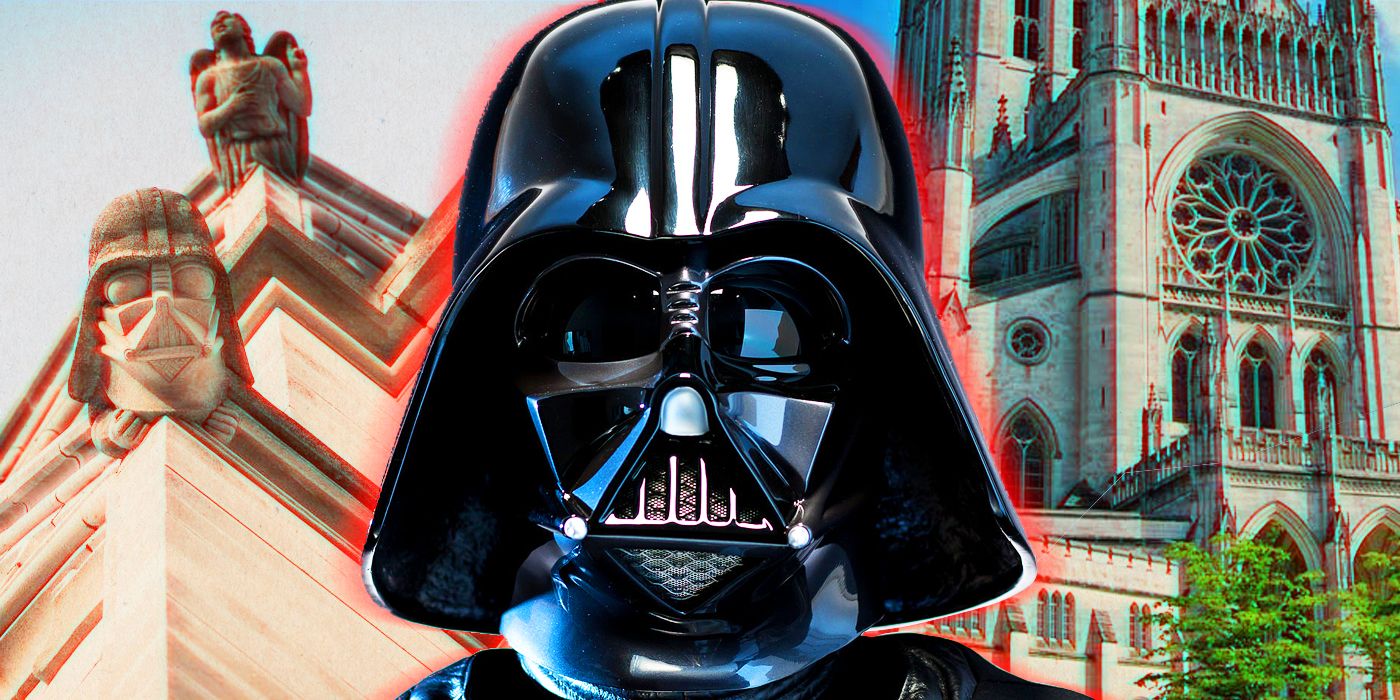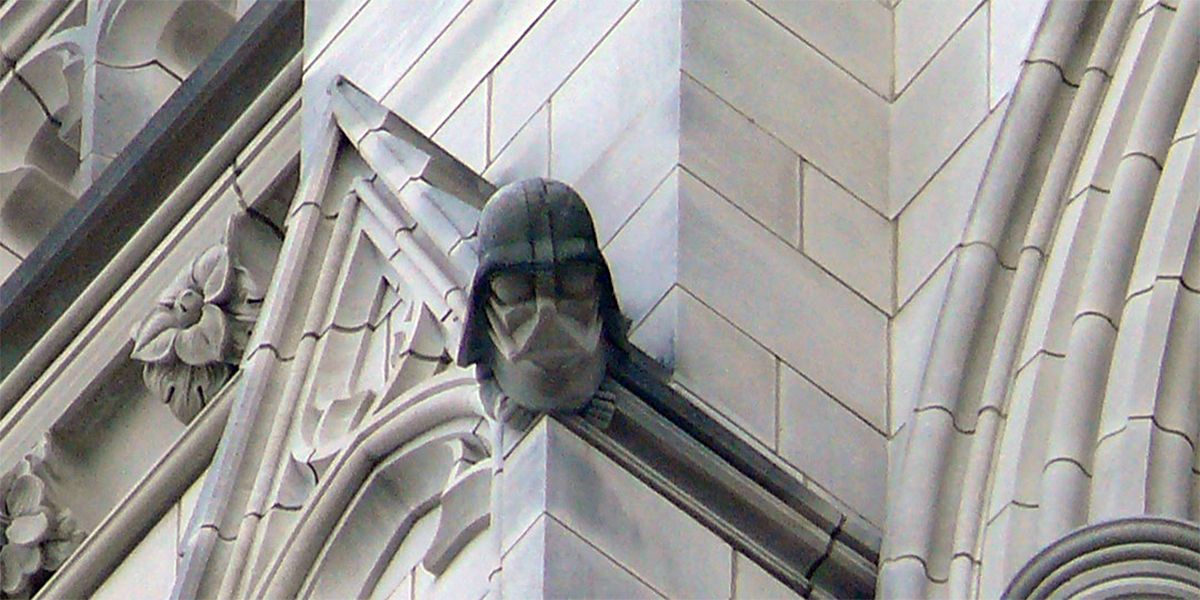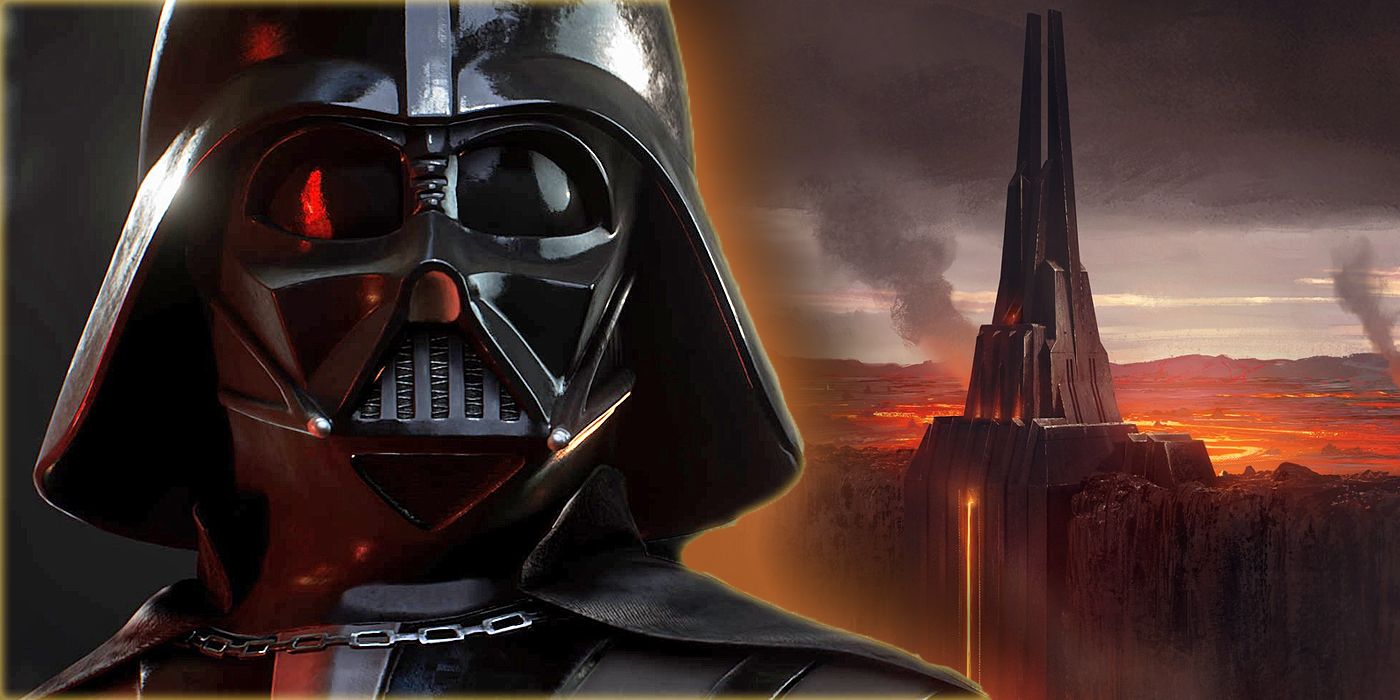Star Wars, and Darth Vader in particular, has produced its share of artists’ homages over the years, including everything from fan art to sculptures to reimagined effects sequences from the movies created on a home computer. Few of them are more unique, however, than the “Darth Vader Grotesque:” a stone visage decorating the National Cathedral in Washington, D.C.
Not only does his infamous black mask reflect earlier notions of gargoyles, but he also imbues the concept with a sense of fun, and allows non-Christian visitors to feel a connection with the cathedral without detracting from its main purpose as a house of worship. The cathedral’s website proclaims it their most popular attraction, and with half a million tourists visiting the cathedral each year, the edifice of the Dark Lord of the Sith gets its share of attention. The story of how this pop culture icon came to adorn one of the most notable houses of worship in the country aptly reflects both Vader’s and the cathedral’s place in American life.
Gargoyles Were a European Tradition, Transplanted to America
The origin of gargoyles – at least as stone figures on churches – is contentious, but their symbolic purpose is clear. In Europe during the Middle Ages, their presence on the outside of cathedrals – pointed away from the sanctuary within – easily conveyed notions of protection and holiness for a population who largely could not read. The United States may be a much younger country than those of Europe, but the gothic architecture still managed to travel across the Atlantic, and informed such revered structures as St. Patrick’s Cathedral in New York and the Cathedral Basilica of St. Louis.
The National Cathedral is no exception to this influence, being the sixth-largest gothic cathedral in the world and described on its website as “a spiritual home for the nation.” It has hosted prayer services following the inauguration of the last four presidents, as well as funerals and memorial services for another ten. But while the building’s design may come from the Old World, the details definitely belong to the New, including one from a galaxy far, far away.
A Star Wars Contest Produced the Darth Vader Gargoyle
The gargoyles on the National Cathedral are much more whimsical than fearful, and include figures with nicknames such as “the Yuppie Gargoyle” and “the American Rattlesnake.” In 1986, the Cathedral finished construction on two new towers and ran a contest in National Geographic World asking children to submit designs for new gargoyles. Contestant Christopher Rader chose Darth Vader as a subject, and the Cathedral decided to use his drawing as basis for the design. Sculptor Jay Hall Carpenter created the model, while mason Patrick J. Plunkett did the actual carving.
Four designs were chosen in total from the competition, and Vader came in third, but that didn’t stop it from rapidly becoming a popular draw. Situated on the northwest side of the building, Lord Vader requires binoculars to get a look at, but walking tours are available during the warm months (May through September) and the grotesque (differentiated from a gargoyle in that it doesn’t have a rainspout) is visible from the northwest parking lot.
The character’s inhuman mask feels of a kind with the traditionally monstrous visages of other gargoyles, and as a symbol of both the temptations of power and evil in general, Vader himself fits the earlier notion of wickedness flying from the sanctity of the church. Perhaps more importantly, Darth Vader is an American creation – envisioned by George Lucas and brought to life by a host of other artists – and yet remains universally recognized without saying a word. It’s a weirdly fitting example of what Star Wars does best: linking the symbolism of the past to the vibrancy of the present and future.



